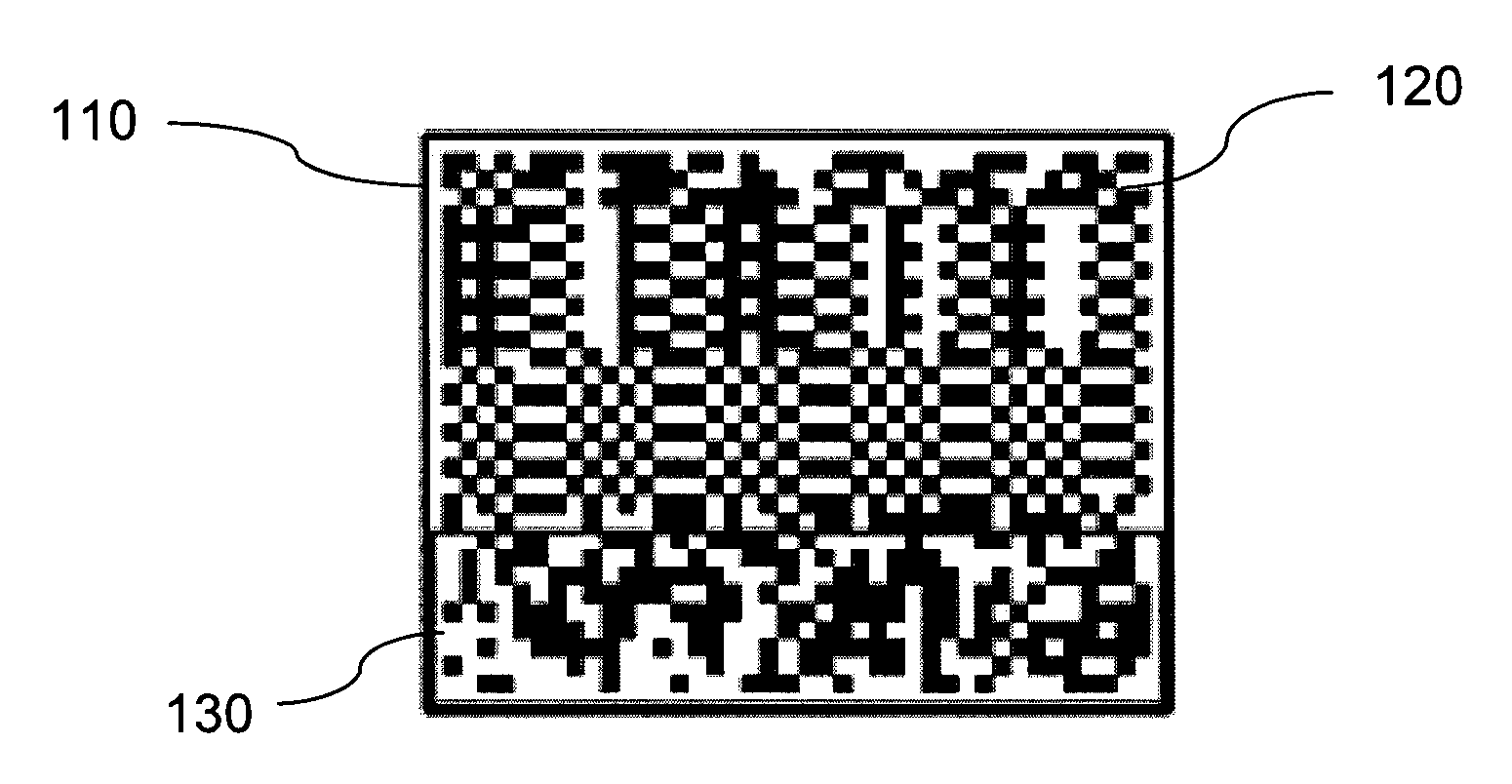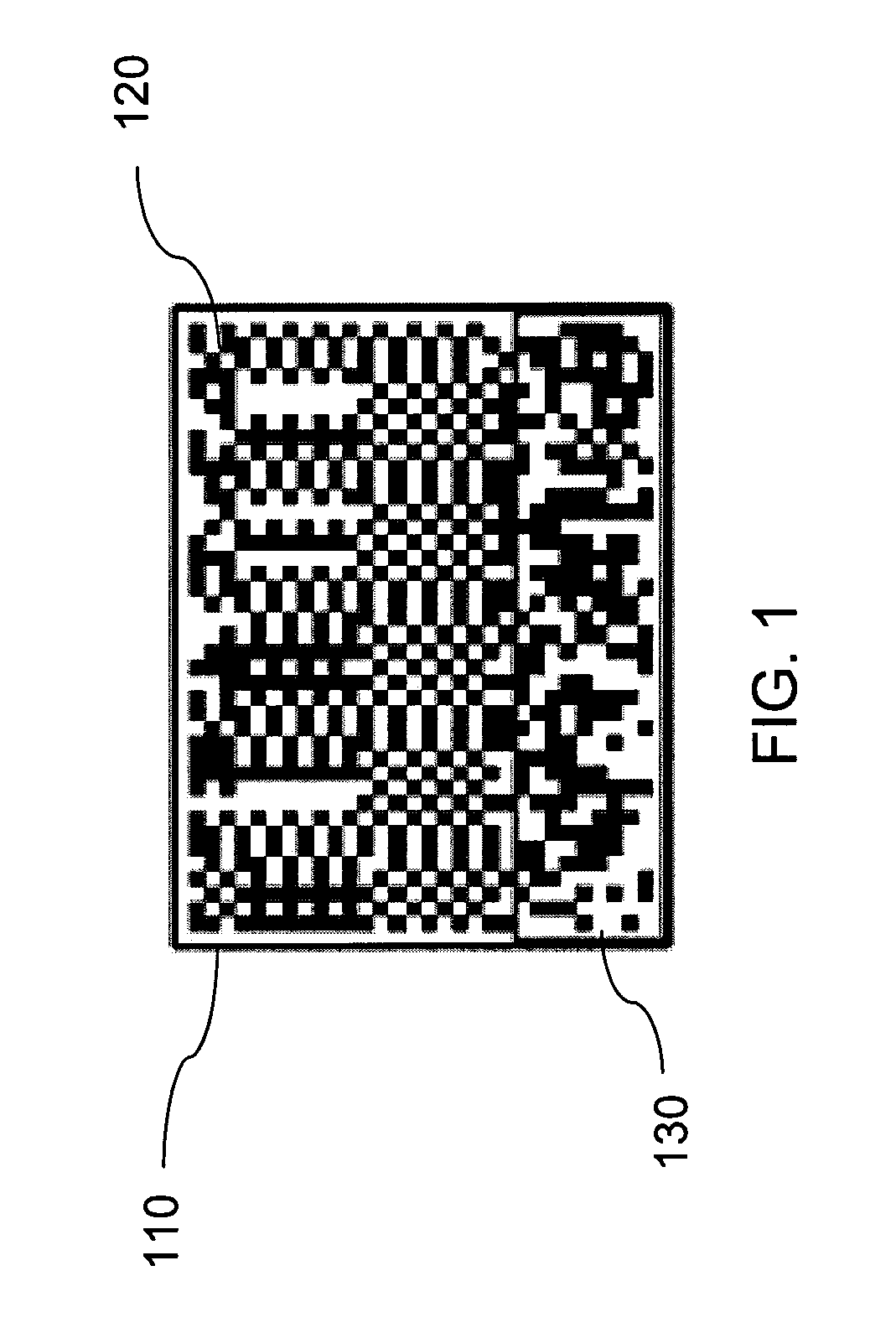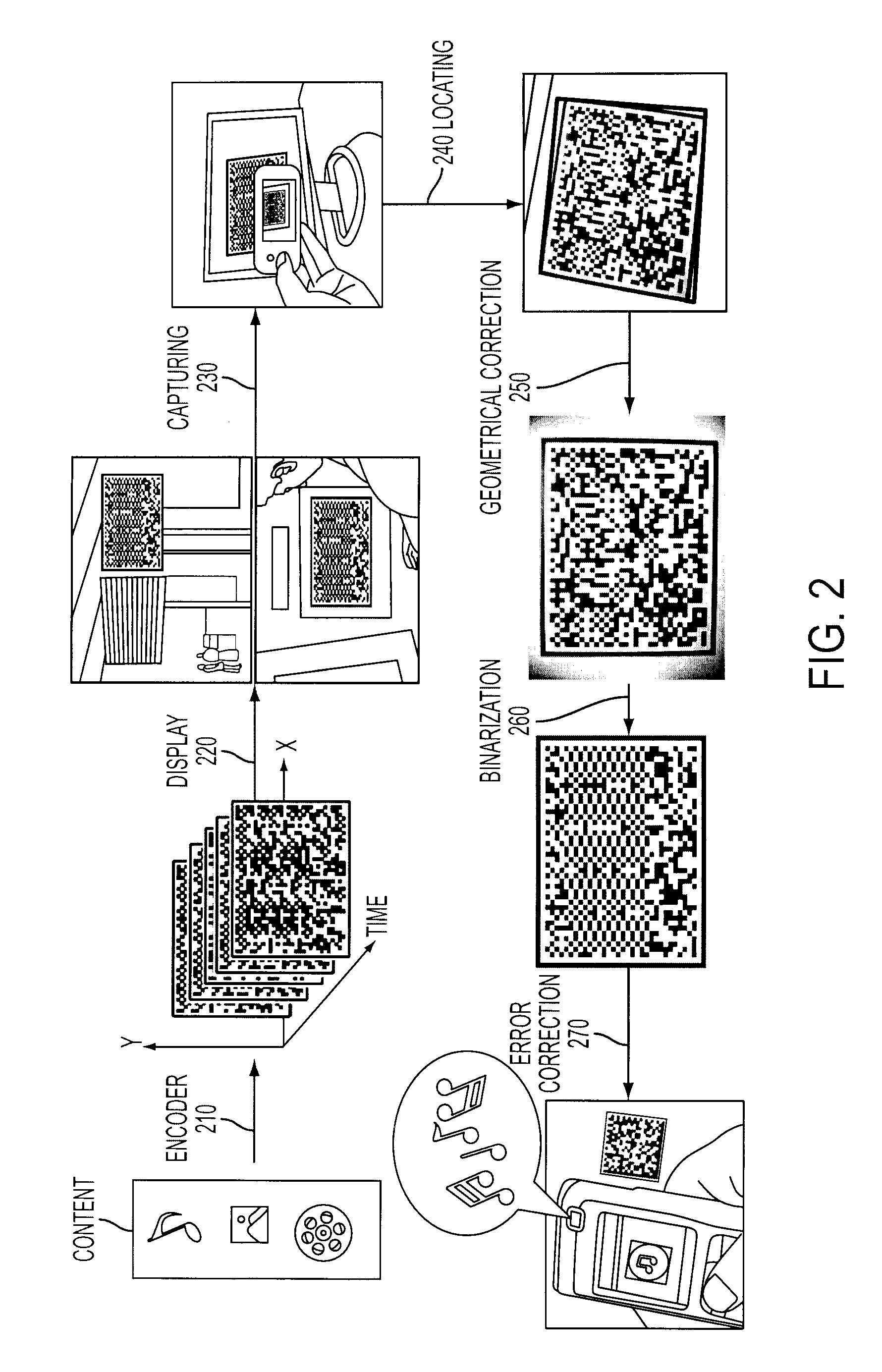1) Target Location: The first step is to locate the target's position. On traditional desktop /
workstation environments, sophisticated methods can be applied. For mobile devices, however, detection often needs to run in real time and consume less resource to save power (which means the longer battery life). Lightweight or approximate features are explored to achieve these goals. For example, Viola and Jones used efficient rectangular features in “Robust real-time
face detection,” Int. J. Comput. Vision, vol. 137-154 (2004), for
face detection on a Compaq PDA. Road sign or
text detection often uses
heuristic methods. For 2D
barcode acquisition an unique pattern is often used to identify by its location. For example, a Maxicode contains a bull
eye pattern at its center, a QR Code uses three squares at its three corners as locator patterns, and Datamatrix has its two perpendicular edges. Algorithms are designed to locate these locator patterns efficiently.
2)
Image Enhancement and
Distortion Correction: Camera phones often use cheap
CMOS sensors with fixed focus. Compared with digital cameras with high quality CCD sensors, images captured by camera phones are relatively low quality. One problem is uneven lighting. Images captured by camera phones often have cast or attached shadows. Adaptive binarization is often used to reduce the effect of shading and uneven lighting. Another problem is
perspective distortion. When users capture images, it is impractical for them to hold devices at a perfectly right angle. As a result,
perspective distortion is inevitable and geometrical correction is required to normalize the image before recognition. Focus is another problem to be tackled. Cameras in mobile phones are designed to take pictures of people and scenes. For this reason the
focal length of camera is often set to a distance >1 foot. To keep a reasonable resolution, however, physical barcodes need to be put close enough to cameras, leading to blur in the acquired image. A super resolution method was proposed to solve this problem in S. Baker and T. Kanade, “Limits on
superresolution and how to break them,” IEEE Trans. Pattern Anal. Mach. Intell., vol. 1167-1183, 2002, but the complexity of the
algorithm prevents it from being run on mobile devices. To
handle these problems the symbology should be robust enough to compensate for the adverse effects caused by
image degradation.
3) Recognition: For recognition, features with geometric invariance are often selected since images are usually captured by cameras at arbitrary angles. Geometric invariants are used explicitly or implicitly in previous work. See I. Weiss, “Geometric invariants and object recognition,” Int. J. Comput. Vision, vol. 207-231, 1993 and F. Mindru, T. Tuytelaars, L. V. Gool, and T. Moons, “Moment invariants for recognition under changing viewpoint and illumination,” Comput. Vis. Image Underst., vol. Explicit features include moments or the Fourier descriptors. See S. K. W. Kwok and J. C. H. Poon, “Viewpoint-invariant Fourier descriptors for 3 dimensional planar shape representation,”
Electronics Letters, vol. 1775-1776, 1996, 00135194. An example of implicit features is to locate feature points based on reference points, which is commonly used for decoding 2D barcodes. For example, when the three rectangular location patterns of a QR code are located, the positions of other unit cells in the QR code can be decided and the encoded information will be decoded.
Due to the physical limitation of mobile phones (small keypads, small displays, etc.), the designing of interface to facilitate users' interaction with the device is an important problem.
2) Small input keypads and displays: The
user interface should be intuitive enough.
Decoding errors are inevitable, and extra bits need to be inserted to correct them.
However, decoding of convolved block codes requires computational power beyond current mobile devices.
Especially, the
floating point Viterbi decoding inhibits real-time performance on today's camera phones.
While such systems and methods have proven useful, they fail to take
advantage of the fact that cameras are increasingly being incorporated into such devices.
 Login to View More
Login to View More  Login to View More
Login to View More 


